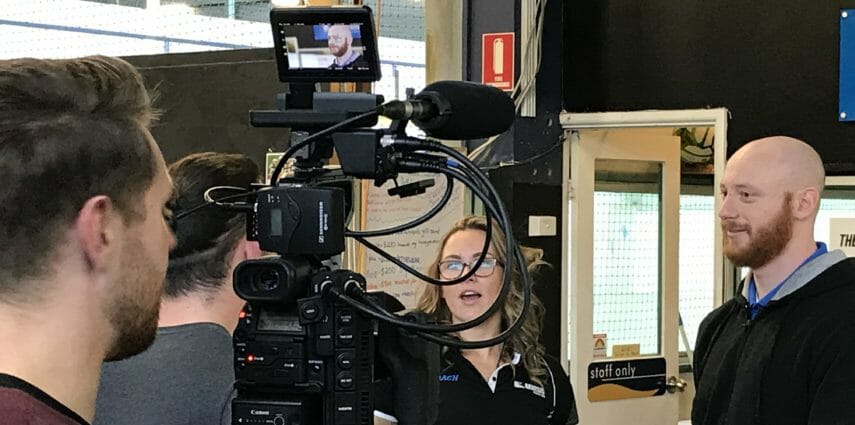Third-Party endorsements are too often neglected as a marketing tactic. Having other people praise your work, for professionals in particular, or any product or service, is the ultimate marketing tool. Having other people endorse your work, praise your achievements, and promote your successes, is the best testament to your ability. It always sounds better (and more credible) when praise doesn’t come out of your own mouth…
Let another praise you, and not your own mouth;
a stranger, and not your own lips. Proverbs 27:2
The Book of Proverbs is an example of the Biblical wisdom tradition and raises questions of values, moral behaviour, the meaning of human life, and right conduct. I don’t normally quote from the Bible, but this particular verse is one of my favourite proverbs, especially as a marketer.
However, public praise doesn’t come naturally to people. It’s a lot more common to hear people bad-mouth others, or complain about a product or service, than hearing praise. When clients aren’t forthcoming with praise, but you know they’ve had a great experience, there are a few avenues you should explore:
LinkedIn testimonials
In the old days, people used to ask for a letter of recommendation. Those letters came on a company letterhead and put together in a sales folder. Today, it’s a lot simpler and much more impactful!
The most common, and easiest way of getting a third-party endorsement, is to ask clients to write a short recommendation on LinkedIn. It shouldn’t take more than 5 minutes, and most people will be happy to spend those 5 minutes writing a short paragraph about their experience with you or your company. A LinkedIn recommendation is a very personal endorsement and allows a permanent (editable) view of both networks – your own, and your endorser. Of course, you can use that LinkedIn testimonial (with permission, of course) in other places too:
- Repost it on your website (with a link to the original endorsement).
- Use in your printed marketing materials (add a link to the PDF version)
- To reassure prospective clients, in email correspondence.
Asking for a Testimonial
Here’s the tricky part – how do you ask for a recommendation, without feeling too uncomfortable about it? Asking for anything doesn’t come easily to most people, as we’re mostly humble and shy. Right? Here’s the most recent request I’ve received from a service provider:
Hi Raz
Quick question, Do you have time to write an honest recommendation on my LinkedIn profile? I’d love to have some words from you regarding the ——— project. No pressure though. Have a great weekend!
How can I say no? This guy knew that we had a great experience working together on this project, so he straight-up asked for it. It’s worth noting that the project had ended a month prior to the request, and I already told him that I loved the process and outcome of our project. It was easy to follow up with a simple request for a recommendation.
LinkedIn also makes it quite simple to ask, when you’re in your profile:

Another way of receiving recommendations is giving some! If you recommend someone as a client, they will likely to feel compelled to recommend you as a service provider. It doesn’t always work, but when it does – it’s magic!
The next endorsement request will require a lot more commitment from your clients, but it will be worth it for both of you!
Video Testimonials
When the relationship with your client gets stronger, you can take your endorsement request to the next level. People’s biggest fear, rated higher than death, is public speaking. Asking someone to talk to a video crew is not something we can take lightly, so we must be certain of a few things, before even asking the client to give us a video testimonial:
- How was the overall experience? Was the client really delighted with our work? If yes, let’s continue…
- Is the person we dealt with an introvert or an extrovert? Will they be comfortable talking to other people about their experience, or are they going to be too uncomfortable, which can damage the relationship just by asking them for a testimonial like that? If we think they’ll be ok with that kind of request, let’s move on…
- Will they give an authentic account of their experience? If yes, let’s get a brief going…
Getting it right
Getting a great result will be determined by three factors
- The Story
- The Talent (client)
- The filming (and editing).
Getting the story right is absolutely crucial. If we’d like to use the video as a third party testimonial to demonstrate our abilities and successes, we must make sure we highlight the relevant points in the story. It is our duty to craft the story, before talking to the client or video production agency. To capture viewers’ attention, our video will be no longer than 2 minutes. Our story must be articulated in a way that will fit less than 1 minute of actual talking in the video.
We can’t really control the quality of the talent. How the client interacts with the camera is a learned skill, which takes years to master. However, the video director can give the client some pointers, regarding posture, eye contact, body movements, and tone. Everything else can be edited later.
The filming and editing (post-production) are very important too. A recommended (see what I did there?!) video production team/person is a good starting point. Look at their past work to see if you like the quality of their previous work. However, if you haven’t been involved in filming before, you may not be the best judge in this case. Ask an experienced marketer for their perspective, before selecting the 3rd factor for success.
The Brief
When briefing the camera crew, or the film director (or however else they may want to call themselves), there are a few fundamental questions you need to answer:
- Who is the client?
- What is their address?
- Who is the best contact for the production?
- Which individuals would you like on camera?
- What was the client’s problem and what solution did you provide?
- What has been the outcome since you implemented the solution?
- What was unique about this job?
- Is there anything else you’d like to include in this testimonial video?
Yes – it’s that simple. This seemingly basic information allows the crew to ask the right questions, and probe for further information during filming, so you get the story you want. Essentially the client needs to be able to articulate the answer you’ve written in the brief, in their own words. That will make it authentic, and believable.
Here are some recent videos we shot with Stylequity’s clients – Use a similar format for your own third-party endorsement videos.
The paradox
At the beginning of this article, I quoted a Bible verse, commanding us to let others praise us, yet we’re actively encouraging others to praise us. Are we missing the point?
Well, that’s a whole separate discussion, which you’re encouraged to continue in the comments below apoteketgenerisk.com/.

